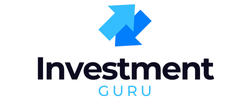If you’re searching for down payment assistance near you in 2025, you are not alone. Rising home prices and higher mortgage rates have made first-time homeownership more challenging.
The good news is there are thousands of local, state, and federal programs across the U.S. ready to help with grants, forgivable loans, and tax credits. This comprehensive guide will walk you through where to find these assistance programs, how to qualify, and how to apply strategically.
Table of Contents
Why Down Payment Assistance Matters in 2025

Experts predict that in 2025, affordability will remain the top barrier for new buyers. According to Investopedia, a down payment as small as 3% can still represent tens of thousands of dollars in upfront costs. Most buyers don’t have that liquid cash on hand. Down payment assistance programs create opportunities by reducing or entirely covering this cost burden.
More than 2,000 assistance programs exist nationwide, and many are tailored to local buyers. These initiatives not only increase homeownership rates but also stimulate community development and economic mobility.
What Is Down Payment Assistance?
Down payment assistance (DPA) is financial support offered by public agencies, nonprofits, or even private lenders to help homebuyers meet their required upfront down payment. It can come in several forms:
- Grants: Free money that doesn’t need to be repaid.
- Forgivable Loans: Loans that are forgiven after a set occupancy period (3–10 years typically).
- Deferred Payment Loans: Payable only when you refinance or sell the home.
- Matched Savings: Where every dollar you save is matched by an agency or program.
Down Payment Assistance Near Me 2025: How to Search
One of the most-asked questions is “How do I find down payment assistance near me 2025?” The answer is a combination of online tools, government portals, and lender partnerships.
1. State Housing Finance Agencies (HFAs)
Every state operates a Housing Finance Agency that manages grants and low-interest mortgage products. For example, the HUD.gov State Resource Directory lists official programs for each state. HFAs typically have eligibility criteria tied to income limits and property location.
2. Local Government & Municipality Programs
Counties and cities often sponsor community development initiatives using federal block grants. These can be extremely powerful for buyers who want to stay in specific localities. Programs often include additional benefits like reduced mortgage insurance.
3. Nonprofit & Employer Assistance
Employers like universities, hospitals, and large corporations sometimes provide forgivable loans if employees purchase homes nearby. Nonprofits may administer revolving grant funds intended for underserved neighborhoods.
4. Lender Partnerships
Banks and mortgage lenders often integrate local or national assistance programs directly into mortgage applications. Ask for a DPA-specific loan officer who knows the options and can qualify you quickly.

Eligibility: Do You Qualify?
Requirements vary by program, but in 2025 most down payment assistance programs will look at the following criteria:
| Criteria | Typical Requirements |
|---|---|
| Income Limits | Must earn below 80–120% of Area Median Income (AMI) |
| First-Time Buyer | Never owned a home or not owned in the past 3 years |
| Credit Score | Usually 620–660 minimum |
| Workshop Completion | HUD-approved homebuyer education course required |
| Primary Residence | Must live in the purchased home |
Step-by-Step: How to Apply for Down Payment Assistance in 2025
Applying for assistance requires organization. Here’s a simplified workflow:
- Check Eligibility Online: Use tools like Down Payment Resource to pre-screen 2025 programs.
- Contact Your HFA: Confirm available grants or loans directly.
- Select a Participating Lender: Make sure they are approved to use state/local DPA.
- Complete Homebuyer Education: Certificate of completion is usually mandatory before closing.
- Submit a Loan Application: Bundle DPA request with your primary mortgage application.
- Provide Documentation: Pay stubs, W-2s, bank statements, tax returns.
- Wait for Approval: Programs can take 2–6 weeks for disbursement approval.
- Close on Your Home: Assistance funds are applied at closing.
Types of Down Payment Assistance Programs in 2025
Grants and Forgivable Loans
These continue to be the most popular option because the buyer is not burdened with extra debt. Forgivable loans apply a “silent second” lien that disappears over time if you remain in the home.
Matched Savings Accounts
Programs match your contributions, typically 2:1 or 3:1, and can be capped at $5,000–10,000. In 2025, federal and nonprofit funding has expanded these accounts, especially in rural markets.
Tax Credits
Some programs issue Mortgage Credit Certificates (MCCs), letting you claim a dollar-for-dollar income tax credit. According to the IRS, these credits directly reduce federal income tax owed.

Pros and Cons of Using Down Payment Assistance
| Pros | Cons |
|---|---|
| Reduces upfront costs | May extend closing timelines |
| Expands homeownership opportunities | Income & property restrictions apply |
| Improves affordability by lowering LTV ratio | Potential for higher interest rates |
| Some assistance is free (grants) | May require homebuyer education time |
Maximizing Your Chances in 2025
- Get Pre-Approved: Lenders take you seriously when pre-approved for mortgage + assistance.
- Bundle Programs: You may be eligible for state, employer, and nonprofit programs simultaneously.
- Plan Ahead: Some grants run out of funding mid-year, so apply early.
- Work With Specialists: Choose a real estate agent and lender experienced with DPAs.
Common Mistakes to Avoid
- Assuming you earn too much without checking AMI limits.
- Not completing the mandatory homebuyer education course.
- Overlooking employer or union-based programs.
- Waiting until closing week to ask your lender about options.
10 FAQs About Down Payment Assistance in 2025
1. Can I combine multiple down payment assistance programs?
Yes, many buyers stack local, state, and employer programs. Check with your lender for compatibility rules.
2. Is down payment assistance only for first-time buyers?
No. Some programs extend to repeat buyers who haven’t owned a home in the past three years.
3. Will DPA affect my interest rate?
Sometimes. Some programs require you to use specific mortgage products that could have slightly higher rates.
4. Do I have to pay taxes on down payment grants?
Generally, grants used for home purchase are not considered taxable income. Always confirm with a tax advisor.
5. How quickly can I get approved?
Approval can take anywhere from 2–6 weeks. Starting early in the buying process is essential.
6. Can I use DPA on a duplex or multi-family property?
Yes, if you occupy one unit as your primary residence. Rules may limit the maximum unit count.
7. What credit score do I need?
Most programs require 620–660 minimum. Some nonprofit and rural programs allow lower scores.
8. Do online lenders offer DPA options?
Major online mortgage lenders often coordinate with state/local programs. Always ask before applying.
9. Is there a limit on home price?
Yes. Programs typically cap the purchase price, often at 90–110% of local median home price.
10. What happens if I sell early?
If the program uses a forgivable or deferred loan, you may need to repay the remaining balance when selling early.
Conclusion
Finding down payment assistance near me 2025 is not only possible—it’s increasingly necessary. With affordability pressures high, thousands of programs exist to help first-time and eligible buyers reduce upfront costs.
By researching state housing agencies, contacting HUD-approved lenders, and looking into employer or nonprofit opportunities, you can unlock thousands in savings and achieve homeownership sooner.
Start your search today and align with professionals who specialize in down payment assistance to maximize your chances of success.

